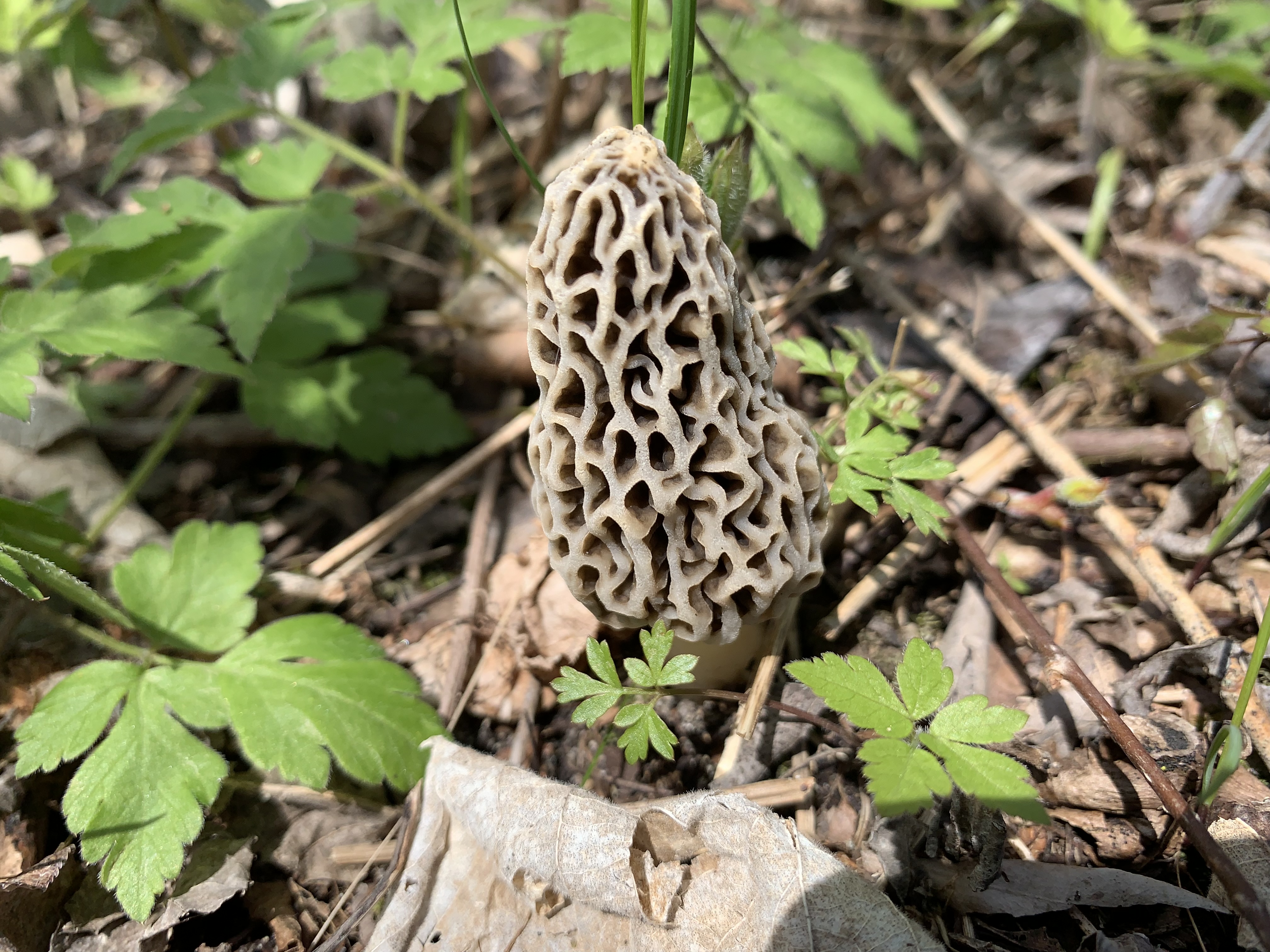I’ve always associated lilacs, peonies, and Mother’s Day with morel mushrooms. Hunting them each spring was a family ritual. Dad would gather all us kids and we’d troop out to the woods. He knew just where to look for them. Some years we’d come home triumphant with a bag full. Other years we’d find only one or two. It didn’t matter, though. It was all about the hunt. I couldn’t see well enough to spy one at my feet, but I went along each spring, carrying the basket. Dad would direct me to “find” some so that I could score along with everybody else.
Most rural families that I’ve known hunt mushrooms. It’s part of the culture here in Iowa. We’ve hunted them on Owl Acres with very little success, but we know they could be out there. Meanwhile, Bryan has this special spot behind the hotel, and another along the railroad tracks, where he’s pretty sure he’ll find some each year.
But what are they? And why are they such a prize? Well, first of all, common morels (Morchella esculenta ) are, you guessed it, mushrooms. They are shaped like little Christmas trees with fat stems. The surface of a morel mushroom is honeycombed with ridges and pits packed with spores. If you cut a true morel open, you will find that the inside is completely empty. False morels have chambered interiors instead of being hollow. False morels are generally poisonous.
The mushroom is the fruiting body of a mycorrhizal fungus. (Myco refers to a fungus, and rhyzal refers to roots.) This fungus lives belowground. It is a mass of threads and fibers that penetrate into the cells of the tree roots. Through a symbiotic relationship, both the tree and the fungus benefit from this arrangement.
The tree provides the fungus with sugar which it makes through photosynthesis. The fungus cannot make its own sugar, but it can provide water and nutrients that the tree can’t readily get on its own, including organic nitrogen, phosphorous and iron. Fungal enzymes also free calcium, magnesium, copper and zinc, all of which the tree needs. The fungus penetrates the cell walls of the roots, giving it two-way access. In this way, the fungus serves as a communication network and transportation network. The fungus effectively extends the tree’s root system, absorbing water from the soil into the roots. Its network can also carry chemical messages from one tree to another. Around Owl Acres, the morel fungus seems to have a strong preference for partnering with elm trees although ash, sycamore, cottonwood and other trees will do.
This symbiotic relationship is why morel mushrooms are most often found in the vicinity of elm trees—specifically injured or dying elm trees. When the tree is healthy, the fungus is healthy and happy. But when the tree starts to die, the fungus goes into emergency mode. Without the sugar from the tree, the fungus will also die. So, the theory is, the fungus sends up its fruiting bodies (mushrooms) loaded with spores to spread its genes far and wide in hope that its offspring will survive even when the parent fungus is gone. This process takes years, so morels can spring up year after year in the same locations.
Morels are also associated with forest fires. They are most abundant where a moderate fire has passed, cleaning up the forest floor, and damaging some of the trees.
This symbiotic relationship between morel fungi and trees is also why it is very difficult to cultivate morels. Unlike many other types of mushrooms, morels will not grow indoors. They need their natural habitat and specific conditions such as trees in various stages of dying. It’s hard to see all the life going on underground that creates the magic of the morel, so let’s just step back and enjoy the thrill of the hunt and that once-a-year feast.
After we brought in the prized mushrooms, Mom would roll them in egg and cracker crumbs and then fry them in butter. I enjoyed them tremendously until the year I developed an allergy to them. Now I pass my share to Bryan, who thinks that morel mushrooms are the most delectable food on the planet.
Photo by author
